
by California Casualty | Auto Insurance Info, Safety |
Keep yourself, your passengers, and other drivers on the road safe in these four common high-pressure situations when you need to pull over on the side of the road.
Pulling over on a highway
Tip #1: If you need to pull over, do not panic or make sudden moves. This could cause you to make rash decisions. Check your surroundings and know the positions of the other vehicles on the road. This will help ensure that you don’t cut them off.
Tip #2: Don’t go left. The left side of a highway usually has less space. If there’s no barrier, it also might put you close to oncoming traffic. Put on your right turn signal. Start moving to the right as soon as you can do so safely.
Tip #3: Look for a wide shoulder. Avoid construction zones and places that are overgrown with trees. The ideal spot has a wide shoulder next to flat grass to allow your vehicle as much distance from the highway as possible.
Tip #4: Be aware of road conditions. Weather can make the roads slippery, such as black ice which can cause dangerous conditions. As you’re traveling right, adjust your speed accordingly. Be aware of any debris.
Tip #5: Activate your hazard lights so other vehicles are aware you are there. This is especially important in the dusk or dark. Do not exit your vehicle. You are much safer inside your car. However, if you must get out, stay on the side opposite to the highway, and never turn your back on traffic. Follow steps, if needed, in the next section on roadside assistance.
Tip #6: Give yourself ample time and space getting back onto the highway. Getting up to highway speed takes time. Turn off your hazards and put on your turn signal. Start to accelerate in the shoulder lane. When you are up to speed, safely merge back into traffic.
Roadside emergencies
Tip #1: Recognize there is a problem. You might notice that your car is in trouble due to noises, smells, or lights on the dashboard. Put on your hazard lights to alert other drivers that you are having an issue. Be aware of other cars around you as you look for a safe place to pull over.
Tip #2: Find a safe place to stop. Avoid stopping at a corner or the bottom of a hill where your car might surprise other drivers without enough room for them to slow or stop. If you can make it to a freeway exit, a rest stop, or a parking lot, do so. If not, a wide shoulder on the side of the road will work. Try to stop under a street light if possible.
Tip #3: Mark your spot. Don’t exit your car until it’s safe to do so. If you’re on a busy road, get out the passenger side and stay away from traffic. Set up emergency flares or fluorescent cones that warn other drivers you are there. Then return to your vehicle.
Tip #4: Call for roadside assistance if you need it. You may have roadside assistance through your insurer, but if you don’t, you can call a local towing service. There also are some apps that will connect you with service providers, such as HONK and Urgent.ly. Check with your local municipality as well. The state of California offers a free Freeway Service Patrol program to help clear the roads from broken down vehicles.
Tip #5: If you can, take care of simple repairs. You may be able to fix your flat tire or jumpstart your car.
Tip #6: Be careful of anyone who stops to help. Use your best judgment. Some people who offer to help may wish to cause harm. Err on the safe side and lower your window only enough to talk. Let the good Samaritan know that professional assistance is on its way.
Police stops
Tip #1: As soon as you hear the siren or see the flashing lights, put on your hazards. This lets the police officers know that you saw them and that you’re slowing down.
Tip #2: Search for a place to pull over that’s large enough for two cars. Most officers will permit you to go a short distance to a driveway, business parking lot, or gas station. If the car is unmarked, make sure you are in a safe place, such as in a well-lit area with people around or near an open business.
Tip #3: Turn off the ignition and wait. It may take several minutes for the officer to exit the car. He or she may be getting information about your car. Be patient and wait. Do not get out of your car.
Tip #4: If it’s a marked vehicle, roll down your window. If it’s an unmarked car, wait until the police officer approaches and asks for credentials before you roll down your window.
Tip #5: Be calm when you talk with the officer. The officer will most likely ask you for your license, registration, and insurance card. Let them know if you do not have one of the required documents.
Tip #6: If you get a ticket or citation, do not argue. Be respectful. Thank the officer if you get a verbal warning. After the officer has returned to his or her patrol car, pull out safely into traffic
Tip #1: Listen for a siren. A police, ambulance, or fire truck siren can be heard for a good distance. If you think you hear a siren, shut off your radio or music. Try to determine the direction where it is coming from. Look for flashing lights.
Tip #2: Put on your right turn signal and slow down. Continue listening for the siren and looking for lights. Identify a place where you can safely pull over to the right of the road.
Tip #3: Check your mirrors and make sure the way is clear. Pullover and park your car. You can leave the engine running as you shouldn’t be there for long.
Tip #4: Watch for the emergency vehicle and wait until it has passed. When you do pull out, you will want to stay at least 500 feet behind it.
Tip #5: Check your mirrors, put on your turn signal and carefully pull back into traffic. You may need to wait your turn, as other drivers will be doing the same thing.
Drive safe.
This article is furnished by California Casualty, providing auto and home insurance to educators, law enforcement officers, firefighters, and nurses. Get a quote at 1.866.704.8614 or www.calcas.com
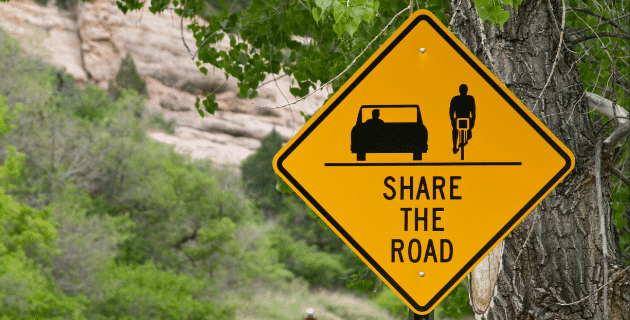
by California Casualty | Auto Insurance Info |
When it comes to sharing the road with others, let’s face it, we don’t always know what (or whatnot) to do. Ask anyone who has ever been behind a slow-moving vehicle or who has tried to pass an 18-wheeler…
Here’s a quick guide on the rules of the road as they pertain to sharing it with trucks, buses, motorcycles, bicycles, slow-moving vehicles, and pedestrians—plus a final word on the importance of moving over for emergency vehicles.

Trucks
A big rig weighs considerably more than the average car, and could be as much as 20-30 times heavier, according to the Federal Motor Carrier Safety Administration. Their significant size and weight affect how quickly they can stop, go, and maneuver with lane changes and turns. Despite mirrors and a bird’s eye view, trucks also have large blind spots. And if your car is in one, the trucker likely has no idea you’re there.
-
- Don’t cut off a truck by driving into the empty space just in front of them. While it takes a normal passenger car traveling at 65 mph about 300 feet to stop, it takes double that distance for a fully loaded commercial truck at the same speed. If you’re too close, the truck may not be able to slow down and avoid a collision.
- Do not try to get past a truck to reach an exit or turn. Slow down and stay behind.
- Know the locations of a truck’s blind spots and avoid them. These are typically directly in front, directly behind, and along the sides, but especially the right side. The general rule is that if you cannot see the truck driver’s reflection in his or her side mirror, most likely he can’t see you.
- The longer the vehicle, the greater the turning path will be. Big rig drivers often swing wide to make a turn. That means swinging left just before turning right. Watch the trucker’s turn signals and expect the driver to swing the other way. Importantly, do not pass a truck while turning or you might find yourself in its path.
- Always pass a truck on the left side. Once you pass, do not linger. Move out ahead so the truck knows you are there.
- Do not tailgate. You may not have enough time to stop if the truck in front of you stops quickly.

Buses
Buses face many of the same stopping and maneuverability issues that trucks do. The driver has the added pressure of being responsible for a busload of people—and sometimes children. With constant stops, and people getting on and off, there’s even more to consider when driving near a bus.
-
- School buses have warning lights. A flashing yellow means slow down; a flashing red means stop. Stop no matter where your vehicle is, including if it is alongside the bus.
- Remember that it is illegal to pass a school bus that has stopped to pick up or drop off children.
- Expect that public buses also will stop frequently. Maintain a safe distance behind them.
- Large vehicles like buses have a higher center of gravity and must travel more slowly around curves and on-ramps. If you’re behind them, adjust your speed. Do not cut them off.
- Remember that buses have large blind spots too, similar to trucks. They are usually immediately behind the side flat mirrors and behind the rear bumper. Try to stay visible and avoid those areas.

Motorcycles
Motorcycles are smaller than cars and significantly smaller than trucks and buses. So, it’s easy to see how they could almost “disappear” in your blind spots. Motorcycles can come up quickly without you realizing they’re there. That’s why it’s always good to be extra observant and know every vehicle sharing the road with you.
-
- Do a visual check and use your mirrors when you change lanes, enter a major road or make a turn.
- Allow motorcycles to have the width of the full lane width when possible.
- Never try to pass a motorcycle that is sharing the same lane as you. Move to one side to give them the room to pass.
- Road conditions can cause motorcycles to change speed or direction suddenly. These include wet slippery surfaces, gravel, and potholes. Anticipate this and be ready to adjust your speed and lane accordingly.
- When you park your car, look for motorcycles before opening your car door.
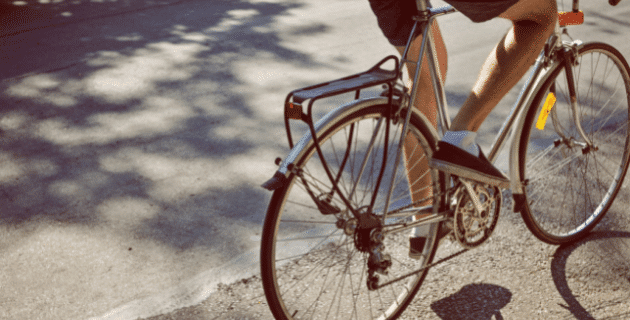
Bicycles
Bicycles have the right to be on the road with other vehicles, providing that they are following the rules. This includes proper lighting and reflectors at night, riding in the direction of traffic, signaling when changing lanes, and staying as near to the right curb as possible. In some cases, bicyclists may have a dedicated bike lane.
-
- Be aware that bicyclists may be permitted to ride on certain sections of highways where there is no alternate route and where bicycling is not prohibited by a sign.
- As with cars, bikes are required to signal turns. A left turn is the left arm extended to the side. A right turn is the left arm bent at a 90-degree angle with the hand at the top. The stop signal is the same with the hand at the bottom. Learn the hand signals so you know what the cyclist is communicating.
- Remember that your car weighs about 20 tons and a bike can weigh 20 lbs. or even less. Your car can do severe damage to a bicyclist and bike.
- Some states have laws about the amount of space you must give bicyclists. The general rule is to give them about 3 feet of clearance.
- After you park, look before you open your car door. There might be a bike coming.
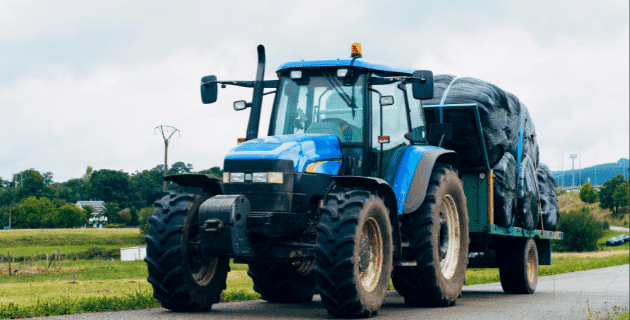
Slow-Moving Vehicles
It can be frustrating to be stuck behind farm tractors, animal-drawn carts, or road maintenance trucks. These slow-moving vehicles typically will display a reflective orange triangle so you are aware of their speed as you approach them.
-
- Slow down. Reduce your speed before you reach the slow-moving vehicle.
- Don’t sound your horn. You could scare a horse, and sounding a horn will not help a slow-moving vehicle move any faster.
- Be aware that animal-powered vehicles could make sudden movements.
- If there is enough room to pass them, do so carefully on the left.

Pedestrians
Vehicles commonly share the road with pedestrians when they are crossing the street. Typically, this would be at a crosswalk. Check your local laws. In some cases, pedestrians do not always have the right of way. However, drivers do have a responsibility to be aware of people walking so they do not hit them.
-
- Stop at all crosswalks where pedestrians are waiting.
- Make sure your car is within 5 feet of the crosswalk. This helps blind pedestrians sense the presence of your vehicle.
- Do not turn before looking for pedestrians.
- Use extra caution in low visibility situations such as dusk, nighttime, or in bad weather. There may be a pedestrian whom you do not see.
- Never pass vehicles stopped at a crosswalk. They could be stopping for someone.
- Leave room. Consider a vehicle emergency braking with pedestrian and cyclist detection.
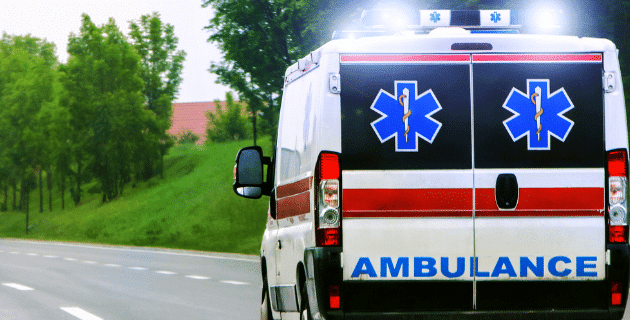
Emergency Vehicles
Police cars, fire engines, and ambulances need to get to the places where they can provide help to people in need. When you see flashing lights or hear sirens, that’s your cue to pull over to the side of the road. You can help emergency vehicles by giving them a clear path to their destination.
Following these rules for sharing the road will help keep you safe. Having the right auto insurance policy will provide peace of mind should you need that coverage. Safe travels.
This article is furnished by California Casualty, providing auto and home insurance to educators, law enforcement officers, firefighters, and nurses. Get a quote at 1.866.704.8614 or www.calcas.com

by California Casualty | Auto Insurance Info |
As parents, we do more than just drive our kids around. Our cars are on-the-go eateries, curbside retreats, entertainment stations, and sometimes even offices. Finding the perfect vehicle that fits all of the needs of your family is so important.
That’s why we’ve tracked down this year’s most popular cars for moms and dads. Check them out, all listed here in alphabetical order.
2022 Ford Expedition (Large SUV)
Starting at $51,000
If you can afford the price tag, the Ford Expedition is highly ranked by Edmunds for its space and power. You can fit up to 8 with ample room for your gear. With the premium package, you get a massive 15.5-inch high-definition touch display and the option for massaging front seats! The rear-seat entertainment systems let kids stream videos and play games on Amazon Fire TV.
There also are power-folding running boards which serve as a step-stool for kids.
2022 Honda Odyssey (Minivan)
Starting at $33,040
The Odyssey has been the top pick in past years for Kelley Blue Book’s “Minivan Best Buy” and a top safety pick for 2021-22 by the Insurance Institute for Highway Safety. It seats up to 8, including 5 car seats. The third row splits and folds with plenty of room for a stroller. The Cabin Watch feature lets you keep tabs on the kids in the back and a Cabin Talk option lets you chat with passengers through the speakers, including through DVD headphones. There’s a wireless charging pad in the front seat and front and rear USB ports. (Unfortunately, the popular vacuum cleaner is no longer included, as that company went out of business during the pandemic.)
2022 Hyundai Palisade (Midsize SUV)
Starting at $34,375
The Hyundai Palisade was a top safety pick in 2021 by the Insurance Institute for Highway Safety. It’s also one of Car and Driver’s favorite three-row family SUVs. There’s room for up to 8 passengers, and the second seat has a one-touch button that moves it forward to easily get to the back row. There are up to 7 USB ports and the ability to connect two Bluetooth devices at the same time. There’s also a touchscreen infotainment display. With seats folded down, there’s plenty of cargo room. Testers fit 33 carry-on suitcases!
2022 Kia Carnival (Minivan)
Starting at $33,555
The Kia Carnival is a minivan that looks like an SUV. They call it an MPV—multi-purpose vehicle. It seats up to 8 with plenty of legroom. Parents will love the optional in-cabin camera system with a zoom function and night vision that allows you to keep an eye on the backseat day or night. A VIP lounge option offers second-row captain’s chairs with kick-out leg rests. The third row can fold flat to the floor for extra storage. The vehicle’s Safe Exit Assist warns passengers not to exit if it’s unsafe. The car also texts you if movement is detected in your car 24 hours after you’ve exited, in case you’ve forgotten a child or a pet in the car.
2022 Kia Telluride (SUV)
Starting at $34,345
The Kia Telluride ranks in Car and Driver’s Top 10 Best Cars and Trucks for 2022 for its combination of comfort, safety, and affordability. It has luxury features like a 12-way power driver’s seat, a 10.3-inch touchscreen, and robust infotainment system, and heated and ventilated rear seats. Yet it will tug a 5,000-pound trailer with ease. Its quiet mode shuts off rear speakers and lowers the volume in front for nappers. There’s room for 8 unless you choose the option for second-row captain’s chairs, and then you’ve got 7.
2022 Subaru Forester (Small SUV)
Starting at $26,320
With safety and driver-assist features as standard, it’s no wonder that the Forester was a top safety pick for 2021 by the Insurance Institute for Highway Safety. There’s roomy seating for 5, and the Forester scores well on fuel economy (26 mpg city, 33 mpg highway). There’s a touchscreen infotainment system and up to four USB ports, including two for the backseat passengers.
2022 Toyota Highlander (Midsize SUV)
Starting at $36,420
Available as a hybrid, this popular family vehicle is a top safety pick for 2021-22 by the Insurance Institute for Highway Safety. It seats 8, with options for heated seats in the front and second rows. Infotainment and driver assistance features come standard. Choose a higher trim level and you’ll get a 12.3-inch display. Fuel economy is good, with up to 29 mpg on the highway with front-wheel drive.
2022 Toyota Sienna (Hybrid Minivan)
Starting at $36,000
Kelley Blue Book named the Toyota Sienna the best buy of 2022. As a hybrid, it delivers fuel economy – 36 mpg on the highway. It also is a top safety pick for 2021-22 by the Insurance Institute for Highway Safety. Three rows of seats are fully equipped with headphone jacks, charge ports, and the ability to recline back. Stow the third row for extra cargo space. The 9-inch infotainment system and a Wi-Fi hot spot makes it easy to connect.
2022 Volvo XC90 (Midsize SUV)
Starting at $51,995
Volvo is known for safety so it’s no surprise that the XC90 is a top safety pick for 2021-22 by the Insurance Institute for Highway Safety. If you can get past the price tag, it also has some nice features. Navigation is standard. You can choose a Climate Control package with a heated steering wheel and heated rear seats. The third row is not roomy enough for adults but works for kids. You can get this vehicle as a plug-in hybrid too.
2022 Volkswagen Atlas (SUV)
Starting at $35,095
With its large cargo capacity and comfortable three-row seating, the Atlas is made for family transport. Families will enjoy the multiple storage nooks and plenty of cupholders, as well as USB ports, including in the back seat. Testers fit an impressive 38 carry-on suitcases with the seats folded down, and four could fit behind the third row with the seats up.
Of course, you don’t have to buy a brand-new car. There are a lot of good options for used cars, too. Whatever you drive, make sure to protect your car with the right auto insurance.
For parents of teens, you can also check out the most popular vehicles for teenagers here!
This article is furnished by California Casualty, providing auto and home insurance to educators, law enforcement officers, firefighters, and nurses. Get a quote at 1.866.704.8614 or www.calcas.com.
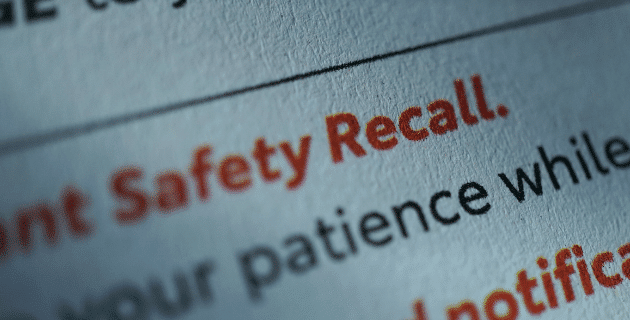
by California Casualty | Auto Insurance Info |
We want our cars to be safe and reliable, yet sometimes, parts malfunction. When it’s a defect that creates a safety risk, the automaker is responsible for fixing it. That’s when you get an auto recall notice. These notices inform car owners that something needs to be adjusted or replaced to make their vehicles safe to drive.
How common are recalls?
Recalls happen all the time. In 2020, there were nearly 900 safety recalls affecting 55+ million cars and equipment, according to the National Highway Traffic Safety Administration (NHTSA), the government agency responsible for exploring safety complaints. NHTSA looks at safety issues, both large and small. If the car doesn’t meet the minimum safety standard, automakers are required to announce a recall. The recall is usually for a specific make and model. The vehicle manufacturer is legally obligated to inform buyers and cover the costs of repairs. Even so, only about 75% of vehicles recalled in a given year are ever fixed, according to NHTSA.
Note: There is a time limit on recalls, usually 8 years. A repair after that timeframe usually means you have to cover the cost.
Why might my car be recalled?
Recalls affect parts of the car that could cause an immediate safety hazard. They could be small or large, and include airbags, tires, brakes, engines, and electrical components. They would not, however, include air conditioners, radios, or ordinary wear and tear. One recall that occurred this past year was for the seat belt in a Ford Motor F-150 Super Cab. The belt was installed incorrectly and as a result, didn’t provide enough restraint in the event of a crash. Takata airbags again surfaced this year as NHTSA looked at 20+ automakers who used the potentially explosive bags. Other 2021 recalls were for brake issues, hood problems, battery fire hazards, and diesel engine stalling, according to Car and Driver.
Why do people sometimes ignore recalls?
It may be because they are not aware of the recall. Perhaps the notice was mailed to an old address and not forwarded. Maybe they think it will take too much time or effort, or they could be without a car. Finally, they simply may not care.
Why should I pay attention?
It’s easy to ignore recall notices. Don’t. Even a small defect can put you in a life-threatening situation. Plus, ignoring a recall can affect your insurance. If you’re involved in an accident and the faulty part is the cause, you might not get reimbursed for repairs or for medical costs.
How do I know if my vehicle has been recalled?
If you’re the original owner of the car, you should get a recall notice in the mail. If you take your car in for regular maintenance at the dealership, you also should be notified. If, however, you purchased the vehicle as a used car, and you get your car serviced at a local mechanic, you may not be aware of a recall. It’s easy to check, however. Visit the NHTSA recalls website and input your vehicle identification number (VIN). You’ll find this 17-character number on the lower left of your car’s windshield, on the inside of your driver’s side door, or on your registration or insurance documents. Not only can you check car recalls, but you can find recalls on child car seats and tires. You can also download the app to your phone and get alerts.
What do I do if I get a recall notice?
If your car is recalled, contact the dealership and schedule a repair as soon as possible. Ideally, the dealership will provide a loaner car but if not, you may qualify for a rental car with your auto policy or be reimbursed. If the dealer gives you a rental car while yours is being repaired, you’ll want to verify that you have the right insurance coverage for a loaner. Finally, if you already fixed the defect before you learned about the recall, you can get reimbursed from the dealership.
Recalls keep us safe. Other ways that you can stay safe are to wear seat belts, practice defensive driving techniques, and maintain and insure your vehicle. After all, your car is one of your greatest investments. Safe travels.
This article is furnished by California Casualty, providing auto and home insurance to educators, law enforcement officers, firefighters, and nurses. Get a quote at 1.866.704.8614 or www.calcas.com.
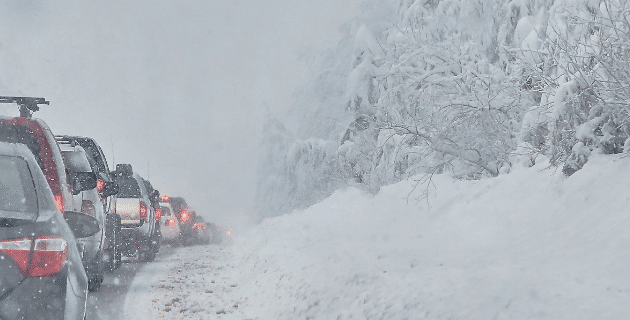
by California Casualty | Auto Insurance Info, Homeowners Insurance Info, Safety |
When the temperatures dip low, wind speeds hit high, and precipitation is in the forecast, you could be in the path of a winter storm. These powerful acts of nature have the potential to cut off power and trap you and your family in your home for days, and that’s not all… Winter storms have also been associated with hypothermia, frostbite, carbon monoxide poisoning, and even heart attacks.
Being well prepared is your best defense. Follow this guide so you can weather winter storms safely.
Know what to expect when
The National Weather Service issues severe weather alerts for winter storms. While the exact amounts of snow vary based on where you live, here are some general definitions.
-
- Winter storm watch – Conditions are right for hazardous winter weather within 48 hours. It doesn’t mean it will occur, but a winter storm is possible.
- Winter storm advisory – Usually issued within 36 hours of an expected storm, an advisory lets you know to anticipate snow, sleet and/or freezing rain.
- Winter storm warning – Expect snow, sleet, ice, freezing rain and/or hazardous winter conditions within the next 12-24 hours.
Get ready
Your primary concerns during a severe winter storm are the loss of heat, power, and communications, having enough food and supplies, and protecting your home from possible storm damage. Stock up on supplies, take protective measures for your home and create a disaster plan to share with everyone in the family. That may include planning for evacuation if needed.
Stock up and charge up- Building your emergency kit.
-
- Stock up on food that requires no cooking or refrigeration. Make sure you have a manual can opener if you’re planning to open cans.
- Include baby food and diapers if needed.
- Buy cases of bottled water to use in case the pipes freeze. You can use this for brushing teeth, flushing toilets, and bathing. Make sure you have at least 3 gallons of water per person. You can also fill the bathtub with water as an extra source.
- Make sure you have enough prescription medications, and any toiletries needed.
- If you have pets, stock up on food for them.
- Gather your flashlights and extra batteries. Collect candles and matches.
- Pull out the battery-powered radio for weather updates. You can also use it to play music to pass the time.
- Make sure you have lots of blankets and warm clothes for each member of the household.
- Charge all of your devices ahead of the storm. Charge any portable battery backups. Determine how you will charge your phone during a power outage.
Protect your home
-
- Make sure your home’s furnace is in good working order.
- Check for drafts and use these winter window hacks to keep your home warm and toasty.
- Know how to turn off your utilities, such as gas lines or water, in an emergency.
- Consider buying emergency heating equipment such as a wood or coal-burning stove or electric or kerosene heater. Review all safety precautions, and be careful of fire hazards when storing fuel.
- Consider installing a portable generator. Review generator safety and never run a generator in an enclosed space.
- Make sure your smoke detector and carbon monoxide detectors are working. If you’ll be using your fireplace or wood stove for heat, they should be near that area. Have a fire extinguisher nearby just in case, or try this way to put out fires without an extinguisher.
- Test your snow blower and have it serviced if necessary.
- Take a walk around your house and identify any trees that could fall. If there’s time, trim them back.
Be prepared to leave if needed
-
- Service your vehicle and make sure you’re prepared for winter. Have a mechanic check your antifreeze, windshield-washer fluid, defroster, wipers, battery, brakes, and tires.
- Keep your car’s gas tank full for emergency use.
- Stock your car with these must-carry items.
- Research local shelters and warming stations in your area in case you need to evacuate your home.
- Prepack a bag for each member of the family, including pets.
Once the Storm Arrives
During the storm…
-
- Limit your time outside. Hypothermia and frostbite are real dangers.
- Do not attempt to travel during treacherous conditions. You could find yourself in an accident or stranded on the road.
- Stay tuned to emergency weather alerts.
- Check on neighbors if they’re older or have young children who are more at risk in extreme cold.
After the storm…
-
- Avoid driving until conditions have improved. Follow winter driving safety guidelines.
- Keep a supply of kitty litter and/or ice melt to clear sidewalks.
- Be careful to not overexert yourself. It’s common for heart attacks to be brought on by overexertion from shoveling or clearing snow.
- Assess any damage to your home or property and alert your insurance company. You have home insurance for a reason. Put it to work if you need it.
This article is furnished by California Casualty, providing auto and home insurance to educators, law enforcement officers, firefighters, and nurses. Get a quote at 1.866.704.8614 or www.calcas.com.
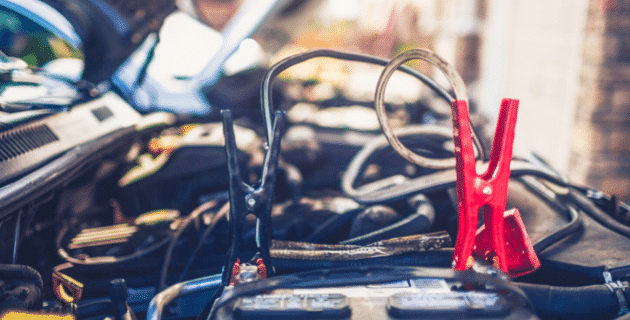
by California Casualty | Auto Insurance Info |
Car batteries don’t last forever. Luckily, if your car won’t start due to a dead battery, there’s an easy fix. You can jump start it.
Jump starting a car transfers the battery power from a live battery in one vehicle to the dead battery in another. It does this by creating a circuit, most commonly using jumper cables. Jump starting isn’t a permanent fix, but it will help you get to where you’re going. And then, you can schedule a follow-up with your mechanic to check your battery and replace it as needed.
It’s not difficult to jump start a car, but you do need to know how to do it properly. If you do not connect the cables in the right way and in the exact order, you could be in for trouble. Follow this process to successfully jump start your car — or someone else’s — this season.
1. Park so that your car’s engine is next to the other car’s engine without touching. In most cases, your cars will have to be facing each other in order for the jumper cables to reach.
2. Place both vehicles in park or neutral. Shut off the ignition. Put on the parking brake.
3. Pop the hoods. Locate the batteries.
4. Get out the jumper cables. Note that they have red and black clamps.
5. Attach one of the red clamps to the positive terminal on the dead battery. Look for the big plus sign or the letters POS to make sure it is positive. Sometimes the positive terminal is also the larger one. (Always connect the dead battery first. Otherwise, you could be feeding energy in the cables and cause a safety hazard.)
6. Attach the other red clamp to the positive terminal on the battery of the working battery.
7. Clamp the black negative to the negative terminal of the working battery.
8. Attach the last black clip to an unpainted metal surface on the car with the dead battery. You can find such a surface on one of the metal struts that holds the hood open.
9. Start the working vehicle and let the engine run for a few minutes.
10. Try to start your vehicle. If it doesn’t start right away, give it another minute and then try again.
11. Remove the cables in the reverse order that you connected them.
12. If the jump start works, don’t shut off your vehicle. Drive around for at least 15 minutes to recharge your battery. And always remember to thank the person who helped you!
If you want to jumpstart your car on your own, you can buy a battery jumper pack. Most people consider this one of the must-carry safety items for your car in the winter. A battery jumper pack is a portable battery with cables that can jump-start your car without the need of another vehicle. If you choose to go this route, be sure to carefully follow the directions. The procedure varies from device to device.
If you feel unsure or unsafe at any point, call for 24/7 roadside assistance. You can also call if the jump start does not work and you need a tow.
Do’s and Don’ts of Jump Starting
Now that you have the basics down, it’s good to review some safety do’s and don’ts.
Do…
-
- Read your owner’s manual on jump starting. In some cases, jump starting may void the warranty. In other cases, there may be jump start lugs where cables need to be attached. The manual will detail any special instructions.
-
- Make sure the battery on the good Samaritan’s vehicle has at least as much voltage as your own. Otherwise, serious damage could occur.
-
- Check that the clamps on the jumper cables are rust-free.
-
- Check that the battery does not have corrosion or rust. You can clean corrosion and dirt with a wire brush. (Corrosion will sometimes prevent the battery from charging.)
-
- Unplug accessories like cell phone chargers. The power surge from the jump start could cause them to short out.
-
- Turn off headlights, hazard lights, turn signals, and the radio in both vehicles.
-
- Use rubber gloves and safety goggles if you have them for extra safety.
Don’t…
-
- Lean over the battery of either car.
-
- Smoke while jump starting a car.
-
- Jump start a battery if it is cracked, leaking or the fluids are frozen. This can lead to an explosion.
-
- Ignore the warning signs:
-
-
- Slow starting engine
- Dim lights and electric issues
- Check engine light is on
- Corroded connectors
- Rotten egg smell
And don’t forget! AutoZone offers free battery testing so you can feel confident that your battery is fully charged.
Finally, remember to turn your lights off. We all know how that typically ends.
Safe travels.
This article is furnished by California Casualty, providing auto and home insurance to educators, law enforcement officers, firefighters, and nurses. Get a quote at 1.866.704.8614 or www.calcas.com.













